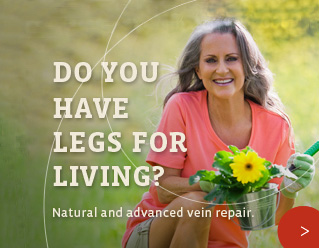The Venous System

The Venous System
Purpose: The veins and lymphatics are responsible for returning blood and fluid to the heart.
Veins: Veins are low pressure, thin walled conduits. Draining blood from our skin, muscles and internal organs, they range from fine venules to large named veins and eventually the largest being the inferior and superior vena cavae. Larger veins frequently include valves, which act as one way gatekeepers, ensuring that the blood is transported in only one direction. Nevertheless, their check valve properties can become incompetent and dysfunctional, creating many of the problems seen in vein care. Divided in to superficial and deep vein systems, it is the superficial conduits that may produce varicosities and be treatable with ablative technology.
Lymphatics: A complex and multifunctional system, the lymphatics serve in infection fighting, fat metabolism, and importantly in the return transport of fluid from our tissues to the central circulation. Composed of an intricate network of blood vessel-like channels and cell-packed nodes, the transport function drains the clear fluid that bathes the lymph nodes, home to infection-fighting cells that respond vigorously in bodily defense, but can also convey cancer cells in the metastatic process. The participation of the lymphatic system in the metabolism of fats commences with absorption through lacteals, present in the small intestine. Chyle, a form of enriched lymph, is in part, eventually, transported to the thoracic duct and central circulation.
Problems
Venous Varicosities: Seen as unsightly, corkscrew vessels on the surface of our legs, they are more common in women than men, but often have a hereditary predisposition. Incompetent valves result in venous “reflux” with the adverse hydrostatic effects of a column of blood from the heart to the feet. The veins bulge, become inflamed, and engorge the lower extremities. Obesity, work and lifestyle situations which require protracted standing exacerbate venous reflux and its manifestations.
Leg pain and cramps: Leg pain and cramps, especially appreciated in the evening and night hours, often is a sign of vein engorgement and vein valve incompetence.
Skin breakdown and ulcers: Leaching of red blood cells and iron into the tissues may cause hyperpigmentation of the ankles. Eventually, unmitigated inflammation and pressure can cause skin breakdown and ulceration requiring vigorous medical attention.
Edema and swelling: Edema and swelling similarly are the result of excessive intravascular pressure. Although venous hypothermia may result in the leaching of fluid from the veins to the surrounding tissues, non-venous causes must be considered including congestive heart failure resulting from a primary cardiac problem and lymphedema related to dysfunction of the lymphatic system.
Lymphedema: Dysfunction of the lymphatic systems drainage function may result in excessive swelling and disfiguring appearance of the extremity. Although worldwide, the most common cause is a localized parasitic infection (filariasis). Metastatic cancer, radiation therapy, surgical interference and traumatic accidents more frequently yield lymphedema in developed countries. The clinical setting and classic appearance often support the diagnosis, yet other venous or cardiovascular conditions must be excluded. Conservative therapy, including compression garments and wrapping, may control swelling and skin breakdown. More advanced cases require manual manipulation, massage and specific exercises. Laser and surgical therapy serve as adjuncts to conservative care.
Spider and unsightly veins: Although “spider” vein may pose more of a cosmetic problem, their presence may weigh heavily on an individual’s sense of self, creating a more self conscious, less energized and forward thinking person. As with other cosmetic issues, they should be addressed for long term emotional health.





